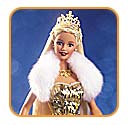Media
Survey and Developmental Study
Derek
Compton, Meredith Macon, Amanda Schwartz, & Lori Smale
This study was conducted by polling 6 second graders, 18 third graders
and 46 fourth graders at
Beech
Mountain Elementary, Bethel
Elementary and Mabel
Elementary schools. The students were asked questions
as a group as well as some individually.
To see a synopsis of the characteristics of
third and fourth graders, click on these links: 3rd
& 4th
Cereal
 When
choosing cereal as their breakfast food, the children in our study based
their decisions mainly on taste. When asked if they ever bought cereal
because of the box it came in, the majority of the students said no.
Prizes were also not very important in choosing a box of cereal.
However, two prizes: CD-ROM games and beanie babies were listed as incentives
for purchasing certain boxes. Parents played a role in the cereal
choice simply because “they buy it, and {the students} eat it”.
When
choosing cereal as their breakfast food, the children in our study based
their decisions mainly on taste. When asked if they ever bought cereal
because of the box it came in, the majority of the students said no.
Prizes were also not very important in choosing a box of cereal.
However, two prizes: CD-ROM games and beanie babies were listed as incentives
for purchasing certain boxes. Parents played a role in the cereal
choice simply because “they buy it, and {the students} eat it”.
Do You Eat Cereal for Breakfast?

Yes – 46 (75%)
No – 15 (25%)
|
Toys
|

|
Toys
|
We discovered that for the most part, children are not as affected by the
packaging of their toys as they are by commercials for them, and the opinions
of their friends. Very few of those surveyed said that they can remember
much about the boxes their toys came in, and almost none of them saved
them or read labels, warnings, directions or other print that appeared
on them. Our conclusion is that at the second through fourth grade
developmental levels, children are not yet paying close attention to details
such as packaging and are persuaded instead by what their friends have.
This correlates with the previous developmental study for the fourth grade,
because the characteristics of fashion and other “cool things” becoming
increasingly important and the need for social support are shown in our
conclusions.
Do You Remember The Package/ Box That One Of Your Toys Came In?

Always – 11 (18%)
Sometimes – 39 (64%)
Never – 11 (18%)
Gender
When
asking the students their favorite color there was no one answer that dominated
the survey. Most of the students had trouble naming just one and
would give us a whole list of colors. None of the boys said pink
or purple but many of the girls said red, blue, and black.
There were some interesting outliers from the survey. A girl put
maroon and a boy put silver as their favorite color. When asking
the students what products made for girls and boy are they all had pretty
much the same responses. The girl’s products were dolls and makeup.
Whereas, the boys were dirt bikes, motorcycles, video games, and sports
stuff. The favorite commercials were Budweiser and Geico. These
products are not targeted towards children, but use characters like, the
frogs and lizard, that kids like. At this stage in development, there
is an increase interest in the opposite sex therefore, many of the girls
products being makeup.
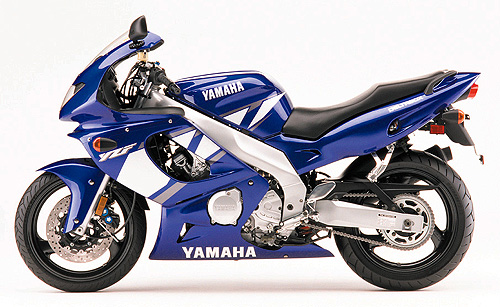
What is Your Favorite Color?
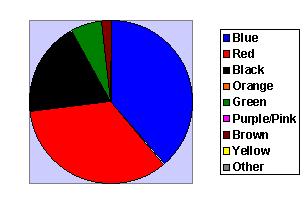
BOYS
GIRLS
Blue – 19 (39%)
Blue – 13 (32%)
Red – 17 (35%)
Red – 6 (15%)
Black – 9 (18%)
Black – 1 (2%)
Orange – 0 (0%)
Orange – 6 (15%)
Green – 3 (6%)
Green – 6 (15%)
Purple/Pink – 0 (0%) Purple/Pink – 5 (12%)
Brown – 1 (2%)
Brown – 0 (0%)
Yellow – 0 (0%)
Yellow – 1 (2%)
Other – 0 (0%)
Other – 3 (6%)
TOTAL
Blue – 32 (36%)
Red – 23 (26%)
Black – 10 (11%)
Orange – 6 (7%)
Green – 9 (10%)
Purple/Pink – 5 (6%)
Brown – 1 (1%)
Yellow – 1 (1%)
Other – 3 (3%)
Consumerism
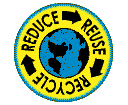
Most
of the students answered “sometimes” and “always” when asked if they used
individually wrapped products. When asked whether they recycle, more
students answered sometimes and never than always. These results
show that students in 3rd through 4th grade show little consideration for
the amount of wasteful packaging and whether it can be recycled.
Do You Recycle at Home?
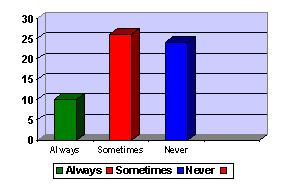
Always – 10 (17%)
Sometimes – 26 (43%)
Never – 24 (40%)
Conclusion
& Connection
Based on this developmental
study of 2nd, 3rd and 4th grade students, we have come to the conclusion
that packaging has little to no effect on their choice of products.
Parental decision is a key factor in the purchasing of cereal, toys and
other items. When children are given a choice of products, their
decisions are based mainly on commercials, peer influence, price and prior
knowledge of an item.
Most of our findings
correlated with the information that was presented in Fall 2000’s developmental
study of second, third and fourth graders. The majority of the students
seemed to place importance on making friends. We saw this in the
statements that were made about why they purchased certain items.
Their decisions were influenced by what their friends had or the popularity
of the item discussed. When asked about their ideas of what is considered
a boy’s toy and what is a girl’s toy, many of them responded with answers
such as playstations, dirt bikes, makeup and Barbies. This illustrates
the finding of the developmental study that boys become more interested
in video games at this stage and girls are daydreaming about their future
as women.
We found one characteristic that
contrasts with the finding of the developmental study from Fall 2000.
It was stated that the second grade “child still shows signs of preoperational
egocentrism (unable to distinguish the symbolic viewpoints of
others from one's own).” Our findings
suggest that they recognize when someone else’s viewpoints are different
from their own. This was evident in the comments made that the students
bought toys and cereal based on their own prior experiences and not because
someone else said they should. The differences in our findings may
be due the fact that these are the same students who were interviewed for
the previous study, yet they are now in the second half of their second
grade year.
Back to the top
Pictures from:
www.barbie.com
www.dirtbike.com
www.hotwheels.com
www.youruleschool.com
 When
choosing cereal as their breakfast food, the children in our study based
their decisions mainly on taste. When asked if they ever bought cereal
because of the box it came in, the majority of the students said no.
Prizes were also not very important in choosing a box of cereal.
However, two prizes: CD-ROM games and beanie babies were listed as incentives
for purchasing certain boxes. Parents played a role in the cereal
choice simply because “they buy it, and {the students} eat it”.
When
choosing cereal as their breakfast food, the children in our study based
their decisions mainly on taste. When asked if they ever bought cereal
because of the box it came in, the majority of the students said no.
Prizes were also not very important in choosing a box of cereal.
However, two prizes: CD-ROM games and beanie babies were listed as incentives
for purchasing certain boxes. Parents played a role in the cereal
choice simply because “they buy it, and {the students} eat it”.



